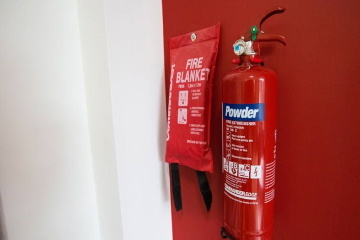More from Adelaide Test and Tagging
More in Politics
Related Blogs
Archives
Social Share
Ensuring Electrical Safety with RCD Test and Tagging
Posted By Adelaide Test and Tagging
Body
Electricity runs practically every element of our life in the modern world. From lighting up our homes to fueling industries, it is an indispensable part of our daily routine. However, electrical mishaps can have dire consequences, including fires, injuries, and even fatalities. This is where RCD (Residual Current Device) Test and Tagging come into play.


What is RCD Test and Tagging? : RCD Test and Tagging is a crucial aspect of electrical safety compliance in homes and workplaces. To find and eliminate any electrical dangers entails inspecting and testing electrical equipment and appliances. The primary focus is on Residual Current Devices (RCDs), which are designed to detect and interrupt abnormal electrical currents that could otherwise lead to electric shocks or fires.
Importance of RCD Testing:
- Safety Assurance: The foremost reason for conducting RCD testing is to ensure the safety of individuals who interact with electrical equipment. RCDs act as a lifesaving device by swiftly cutting off power when a fault is detected, reducing the risk of electric shocks.
- Compliance with Regulations: In many countries, including Australia, RCD testing is a legal requirement. In addition to being required by law, compliance with these standards is also morally righteous in order to preserve the health and safety of tenants, customers, and workers.
- Preventing Electrical Fires: Faulty electrical appliances are a leading cause of electrical fires. RCD testing helps identify defective equipment early, reducing the likelihood of electrical fires that can cause substantial damage to property and life.
- Reducing Downtime: Regular RCD testing minimizes the chances of unexpected electrical failures, ensuring uninterrupted operation in commercial and industrial settings.
The RCD Testing Process: RCD testing involves several key steps:
- Visual Inspection: This initial step includes a thorough visual examination of the appliance or equipment to identify any visible damage or defects.
- Electrical Testing: Technicians use specialized testing equipment to measure the RCD's response time and its ability to trip at specified currents. Any deviations from the prescribed standards indicate a need for maintenance or replacement.
- Tagging: Once an appliance or equipment passes the inspection and testing, it is labeled with a tag that includes information such as the test date, technician's name, and the next scheduled test date.
Frequency of RCD Testing:
The frequency of RCD testing depends on various factors, including the type of equipment, its usage, and the industry standards. Generally, residential properties may require testing every two to three years, while commercial and industrial settings may need more frequent testing, often annually or even quarterly.
Conclusion:
In a world where electrical hazards are a constant threat, RCD tests and Tagging play a pivotal role in ensuring the safety of individuals and properties. Compliance with regulations and regular testing not only prevent accidents but also minimize downtime and damage. To avail of professional RCD testing and tagging services in Adelaide, visit adelaidetestandtagging.com.au. Safeguarding lives and property through electrical safety measures should always be a top priority, and RCD testing is an essential step in achieving that goal.










Comments